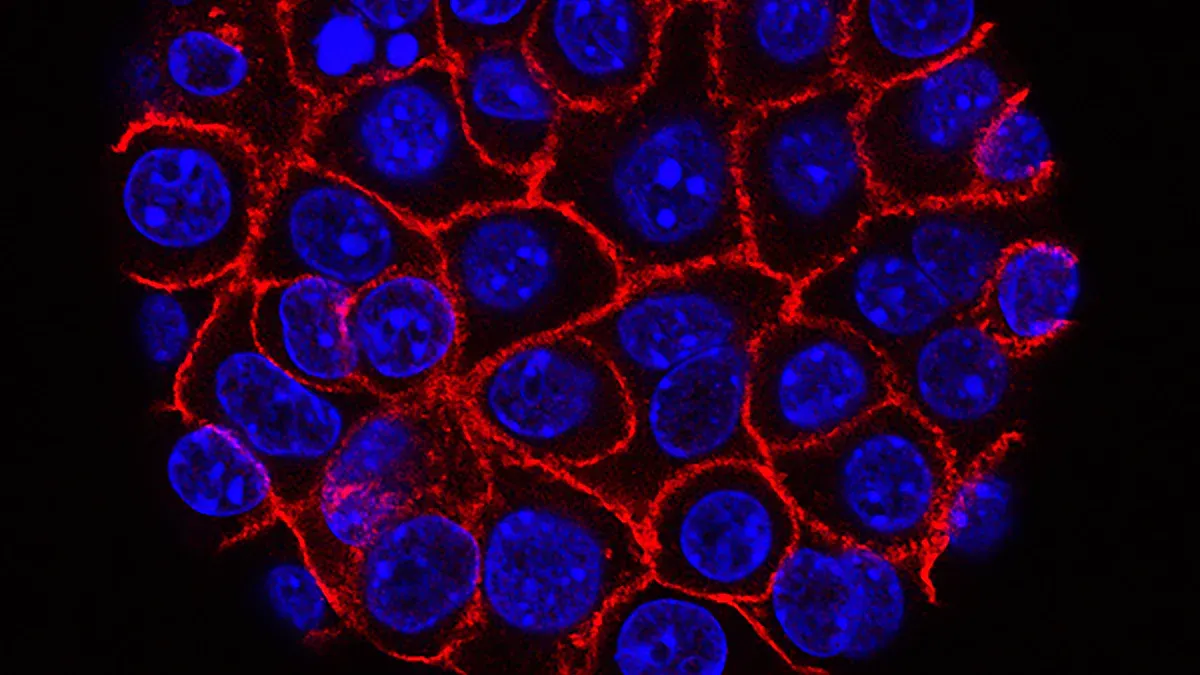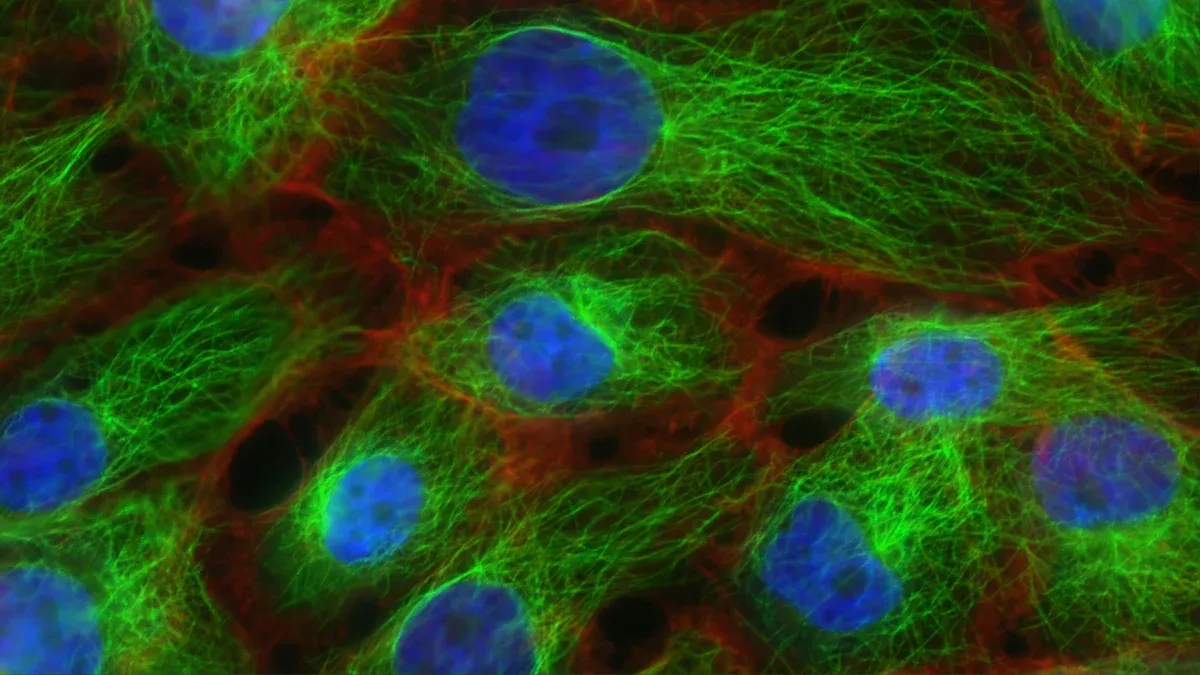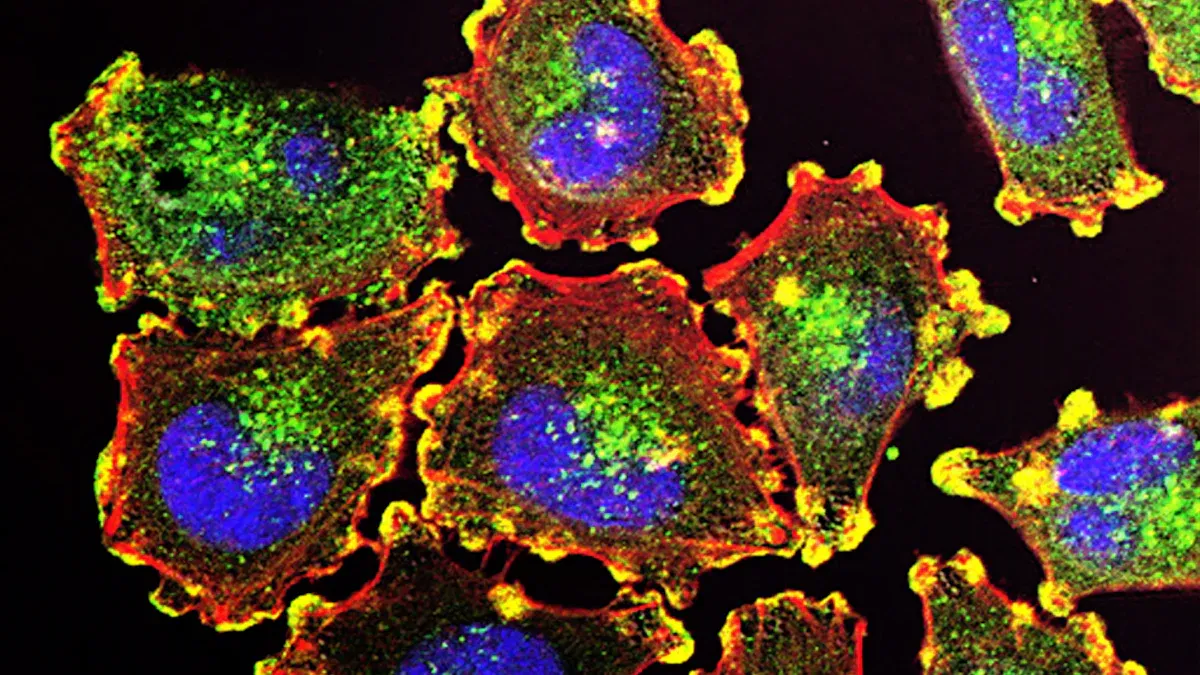What is Burkitt's Lymphoma and What Are Its Symptoms

Burkitt's lymphoma is a rare and aggressive form of cancer that affects B-cells, a type of white blood cell. It progresses rapidly, making early detection critical for successful treatment. Globally, this disease accounts for less than 1% of B-cell non-Hodgkin lymphomas in adults and only 1% to 2% of all adult lymphoma cases. Its incidence varies significantly across regions. For example, in equatorial Africa, rates exceed 4 cases per million person-years, while North America reports lower rates, such as 0.72 per 100,000 in the United States. Recognizing symptoms early can save lives.
Key Takeaways
Burkitt's lymphoma is a rare and fast-growing cancer in B-cells. Finding it early is important for better treatment results.
Symptoms include swollen lymph nodes, belly pain, fever, night sweats, and losing weight without trying. Knowing these signs can help get quick medical care.
There are three types of Burkitt's lymphoma: endemic, sporadic, and linked to weak immune systems. Each type has different traits and symptoms.
The Epstein-Barr virus (EBV) and changes in genes are key causes of Burkitt's lymphoma. Learning about these can help find risks early.
Quick treatments like chemotherapy and special medicines can save lives. See a doctor if you notice any worrying symptoms.
What is Burkitt's Lymphoma?

Overview
Burkitt's lymphoma is a highly aggressive cancer that originates in B-cells, a type of white blood cell responsible for producing antibodies. This disease progresses rapidly, often requiring immediate medical attention. Compared to other B-cell lymphomas, Burkitt's lymphoma has distinct characteristics. It shows a higher mean MIB-1 index (98.1%), indicating rapid cell proliferation. It also expresses specific markers like CD20 and CD10 while being negative for CD3. These features make it unique and distinguishable from other lymphomas.
Scientists have identified three main types of Burkitt's lymphoma. Each type has unique characteristics, including geographic prevalence, age groups affected, and association with the Epstein-Barr virus (EBV).
Types
Endemic
Endemic Burkitt's lymphoma primarily occurs in equatorial Africa. It is strongly linked to EBV infection and often affects children between the ages of 4 and 7. This type frequently presents with jaw or facial bone swelling, which is a hallmark symptom. The high prevalence of malaria in these regions may also contribute to its development by weakening the immune system.
Sporadic
Sporadic Burkitt's lymphoma appears worldwide, including in the United States. It is less commonly associated with EBV, with fewer than 30% of cases showing a connection. This type can affect individuals of all ages but is more common in children. Symptoms often involve the gastrointestinal tract, such as abdominal pain or swelling.
Immunodeficiency-Related
Immunodeficiency-related Burkitt's lymphoma is most common in individuals with weakened immune systems, such as those living with HIV/AIDS. About 30% to 40% of cases are linked to EBV. This type often presents with generalized lymph node enlargement and can progress rapidly if untreated.
Type | Geographic Prevalence | Common Age Group | EBV Association |
|---|---|---|---|
Equatorial Africa | Children ages 4 to 7 | Almost always EBV-positive | |
Sporadic (non-African) | Worldwide, especially in the U.S. | Varies, common in children | Less than 30% EBV-positive |
Immunodeficiency-associated | Common in HIV/AIDS patients | Varies | 30% to 40% EBV-positive |
Understanding these types can help you recognize the symptoms and risk factors associated with Burkitt's lymphoma. Early detection and treatment remain critical for improving outcomes.
Symptoms of Burkitt's Lymphoma

Common Symptoms
Swollen lymph nodes
Swollen lymph nodes are one of the earliest signs of Burkitt's lymphoma. These nodes often feel painless and firm to the touch. You may notice them in areas like the neck, armpits, or groin. Unlike typical infections, these swollen nodes do not subside on their own and may grow rapidly.
Abdominal pain or swelling
Abdominal symptoms are common, especially in sporadic Burkitt's lymphoma. You might experience pain, swelling, or a feeling of fullness in the abdomen. These symptoms often result from abdominal masses pressing on nearby organs. In some cases, nausea, vomiting, or changes in bowel habits may also occur.
Systemic Symptoms
Fever and night sweats
Systemic symptoms like fever and night sweats often indicate disease progression. You may notice low-grade fevers that persist without an obvious cause. Night sweats can be severe enough to soak your clothes or bedding. These symptoms, often referred to as "B symptoms," are common in aggressive lymphomas like Burkitt's lymphoma.
Unexplained weight loss
Unintentional weight loss is another systemic symptom. If you lose weight rapidly without changes in diet or exercise, it could signal an underlying issue. This symptom often accompanies fatigue and loss of appetite, further impacting your overall health.
Symptoms by Type
Endemic: Jaw or facial bone swelling
Endemic Burkitt's lymphoma often presents with swelling in the jaw or facial bones. These tumors grow quickly but remain painless. You may also notice facial distortion or difficulty chewing.
Sporadic: Gastrointestinal symptoms
Sporadic Burkitt's lymphoma frequently involves the gastrointestinal tract. Symptoms include abdominal swelling, intestinal obstruction, or even gastrointestinal bleeding. These signs often require immediate medical attention.
Immunodeficiency-Related: Generalized lymph node enlargement
In immunodeficiency-related Burkitt's lymphoma, you may observe widespread lymph node enlargement. This type can also spread to the brain, causing headaches, vomiting, or altered consciousness.
Early recognition of these symptoms can significantly improve outcomes. If you notice any of these signs, consult a healthcare professional promptly.
Causes and Risk Factors
Causes
Epstein-Barr Virus (EBV)
The Epstein-Barr Virus (EBV) plays a significant role in the development of Burkitt's lymphoma. This virus can interfere with normal gene expression through its microRNA interactions. EBV-encoded proteins also have anti-apoptotic properties, which help malignant B-cells survive and grow. In immunodeficiency-associated cases, EBV is present in 25-40% of patients, highlighting its importance in certain populations.
Evidence | Description |
|---|---|
Genetic Distinctions | EBV-positive and EBV-negative Burkitt's lymphoma show distinct genetic and molecular features. |
Role in Tumorigenesis | EBV contributes to the tumor formation process in Burkitt's lymphoma. |
Therapeutic Target | EBV-positive tumors depend on EBV expression, making it a potential treatment target. |
Genetic Mutations
Genetic mutations also contribute to Burkitt's lymphoma. ID3 mutations occur in 34-68% of cases and enhance the effects of the c-myc–immunoglobulin translocation, a hallmark of this disease. Other commonly mutated genes include GNA13, RET, PIK3R1, ARID1A, and SMARCA4. These mutations disrupt normal cell regulation, leading to uncontrolled growth and cancer development.
Risk Factors
Geographic Location and Malaria Exposure
Your geographic location can influence your risk of developing Burkitt's lymphoma. In equatorial Africa, where malaria is endemic, the incidence rate exceeds 4 cases per million person-years. Chronic malaria exposure, especially in early childhood, expands EBV-infected B-cells, increasing the likelihood of developing this cancer. In rural areas with high malaria transmission, the risk is even greater compared to urban settings.
Weakened Immune System
A weakened immune system significantly raises your risk. Conditions like HIV/AIDS impair your body's ability to fight infections, making you more susceptible to Burkitt's lymphoma. Immunodeficiency-related cases often show widespread lymph node enlargement and rapid disease progression.
Family History of Lymphoma
If you have a family history of lymphoma, your risk may be higher. Genetic predispositions can make you more vulnerable to developing Burkitt's lymphoma. While this factor is less common than others, it remains an important consideration for understanding your overall risk.
Understanding these causes and risk factors can help you identify potential risks early. If you fall into any of these categories, consider discussing your concerns with a healthcare professional.
Diagnosing Burkitt's Lymphoma
Medical History and Physical Exam
Diagnosing Burkitt's lymphoma begins with a detailed medical history and physical examination. Your doctor will ask about symptoms like swollen lymph nodes, fever, or weight loss. They will also check for visible signs, such as abdominal swelling or jaw tumors. This step helps identify potential red flags and guides further testing.
Diagnostic Tests
To confirm the diagnosis, doctors rely on several tests:
Blood Tests
Blood tests can reveal abnormalities in your white blood cell count, which may indicate lymphoma. These tests also assess organ function to ensure your body can handle treatment.
Imaging Studies
Imaging studies help determine the extent of the disease. Common methods include:
CT scans of the chest, abdomen, and pelvis to locate tumors.
MRI scans of the brain and spinal cord if neurological symptoms are present.
PET scans to evaluate disease spread and monitor treatment response.
Biopsy
A biopsy is the most definitive test for diagnosing Burkitt's lymphoma. Doctors remove a small sample of the tumor for analysis. This sample undergoes histopathology, immunochemistry, and flow cytometry to confirm the diagnosis.
Diagnostic Test | Description |
|---|---|
Biopsy | Examines tumor tissue for histopathology, immunochemistry, and flow cytometry. |
Cytogenetic Studies | Identifies genetic mutations like the c-myc translocation. |
Bone Marrow Aspirate | Checks for bone marrow involvement, which is common in this lymphoma. |
Lumbar Puncture | Evaluates cerebrospinal fluid for cancer cells. |
Staging
Staging determines how far the cancer has spread. This step is critical for planning treatment and predicting outcomes.
Bone Marrow Biopsy
Doctors perform a bone marrow biopsy to check for lymphoma cells in the bone marrow. This test is essential because bone marrow involvement often occurs in Burkitt's lymphoma.
Lumbar Puncture
A lumbar puncture evaluates the cerebrospinal fluid for cancer cells. This test helps identify central nervous system involvement, which is crucial for accurate staging.
Staging involves imaging studies, bone marrow biopsy, and lumbar puncture. It ensures that your treatment plan targets all affected areas effectively.
Treatment Options for Burkitt's Lymphoma
Chemotherapy
Intensive regimens
Chemotherapy is the cornerstone of treatment for Burkitt's lymphoma. It involves intensive regimens designed to target the rapidly dividing cancer cells. Commonly used regimens include:
CODOX-M/IVAC: Combines cyclophosphamide, vincristine, doxorubicin, and methotrexate with ifosfamide, etoposide, and cytarabine.
Hyper-CVAD: Alternates cyclophosphamide, vincristine, doxorubicin, and dexamethasone with methotrexate and cytarabine.
EPOCH: Includes etoposide, prednisone, vincristine, cyclophosphamide, and doxorubicin.
CALGB 10002: A specialized protocol for high-risk patients.
These regimens often include rituximab, a monoclonal antibody that enhances treatment effectiveness. Your doctor will choose the best regimen based on your age, disease stage, and overall health.
Supportive Care
Managing side effects
Managing side effects is crucial during treatment. You may need intravenous fluids to stay hydrated, especially before chemotherapy. Doctors closely monitor your kidney function and blood levels to prevent complications like tumor lysis syndrome. Medications such as rasburicase or allopurinol help protect your kidneys. If you experience anemia or low platelet counts, limiting physical activity can reduce risks.
Nutritional support
Proper nutrition supports your recovery. A neutropenic diet minimizes infection risks by avoiding raw or undercooked foods. If you have kidney issues, a renal diet may be necessary. These dietary adjustments ensure your body gets the nutrients it needs while avoiding complications.
Advanced Treatments
Targeted therapies
Targeted therapies focus on specific genetic changes in cancer cells. For example, research on the SMARCA4 gene has opened doors to new treatments. This gene interacts with the Myc oncogene, a key player in Burkitt's lymphoma. Understanding these mechanisms could lead to therapies that directly target the disease's root causes.
Stem cell transplantation
Stem cell transplantation offers hope for patients with relapsed or high-risk disease. High-dose chemotherapy eliminates cancer cells, followed by autologous stem cell transplantation to restore healthy blood cells. Pediatric patients often achieve a 90% long-term survival rate, while adults see rates of 50-60%. This option is typically reserved for those who respond well to initial treatments.
Early and aggressive treatment improves outcomes. Discuss these options with your healthcare provider to determine the best approach for your situation.
Understanding Burkitt's lymphoma and its symptoms can save lives. Early detection and treatment significantly improve survival rates.
In children, early treatment leads to long-term survival rates of 60% to 90%.
Adults treated promptly achieve survival rates of 70% to 80%.
You should consult a healthcare professional if you notice symptoms like swollen lymph nodes or unexplained weight loss. Early action ensures better outcomes and increases the chances of long-term disease-free survival. Stay informed and proactive about your health.
🩺 Tip: Never ignore persistent symptoms. Early diagnosis makes a difference!
FAQ
What is the survival rate for Burkitt's lymphoma?
Survival rates depend on early detection and treatment. In children, long-term survival rates range from 60% to 90%. Adults treated promptly achieve survival rates of 70% to 80%. Early diagnosis significantly improves outcomes.
Can Burkitt's lymphoma spread to other parts of the body?
Yes, Burkitt's lymphoma spreads quickly. It often affects the bone marrow, central nervous system, and abdominal organs. Early treatment helps prevent further spread and improves recovery chances.
Is Burkitt's lymphoma hereditary?
Burkitt's lymphoma is not typically hereditary. However, a family history of lymphoma may slightly increase your risk. Genetic mutations and environmental factors play a more significant role in its development.
How is Burkitt's lymphoma different from other lymphomas?
Burkitt's lymphoma grows faster than most lymphomas. It often involves specific genetic mutations like the c-myc translocation. Symptoms and affected areas, such as the jaw or abdomen, also distinguish it from other types.
Can Burkitt's lymphoma be cured?
Yes, Burkitt's lymphoma can be cured, especially with early and aggressive treatment. Chemotherapy, targeted therapies, and supportive care improve survival rates. Consult your doctor for the best treatment plan.
🩺 Note: Always seek medical advice if you notice symptoms like swollen lymph nodes or unexplained weight loss. Early action saves lives!
---
ℹ️ Explore more: Read our Comprehensive Guide to All Known Cancer Types for symptoms, causes, and treatments.
See Also
Understanding Acute Lymphoblastic Leukemia And Its Key Symptoms
Identifying Symptoms Of Angioimmunoblastic T-Cell Lymphoma
Exploring Symptoms And Causes Of Acute Eosinophilic Leukemia
